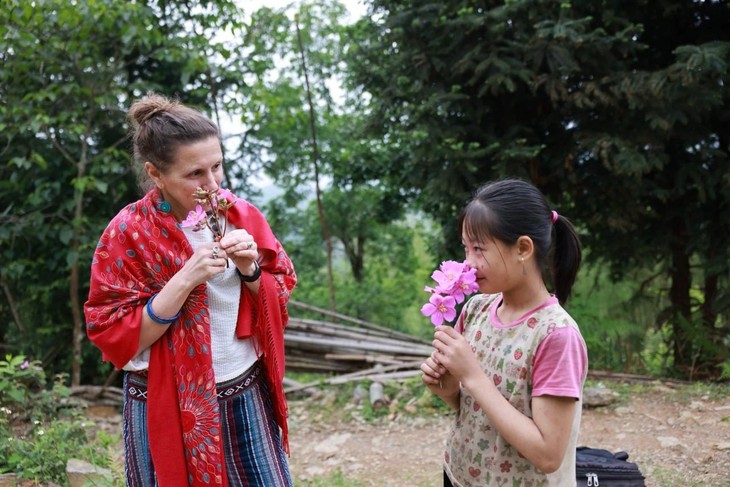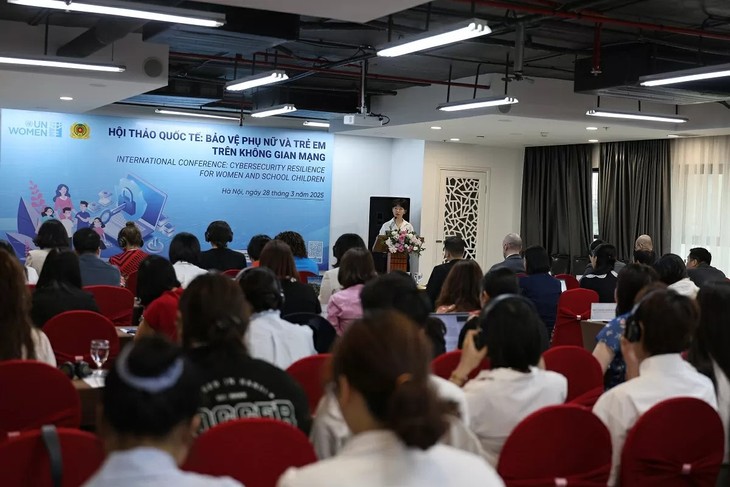(VOVWORLD) - As digital technologies become more embedded in daily life, women and girls face unique risks online, from cyberbullying and harassment to more serious threats such as exploitation and trafficking. Addressing these challenges requires coordinated efforts in education, policy, and technology. We talked to Justine Sass, Chief of the Section of Education for Inclusion and Gender Equality at UNESCO, on the sidelines of a recent international workshop in Hanoi, about ways to strengthen the digital resilience of women and girls in Vietnam and the organization's ongoing initiatives in this regard for Vietnam.
 Justine Sass, an international development specialist with 25 years’ experience working on gender, reproductive health, education and adolescent/youth issues in Asia, Africa and Eastern Europe (Photo credit: her linkedin) Justine Sass, an international development specialist with 25 years’ experience working on gender, reproductive health, education and adolescent/youth issues in Asia, Africa and Eastern Europe (Photo credit: her linkedin)
|
Bao Tram: What are some of the major challenges that women and girls may face in the digital space?
Justine Sass: There are many different forms of violence happening online that women and girls are subjected to. It can be bullying that is repeated online; it can be misogynistic comments and sexist comments received by women; and finally, women and girls often face really unrealistic beauty standards. There can be abusive, insulting, or sexist comments, threats, or personal attacks. We also know that they are often receiving exposure to sexualized content, whether that be images or messages that objectify women and girls, including images directed to them. The biggest threat, I think, is related to sexual exploitation and trafficking, which is obviously the most harmful form of technology-facilitated gender-based violence.
Bao Tram: What specific actions should be taken to strengthen the resilience of women and girls in cyberspace?
Justine Sass: Education is key to strengthening girls’ and women's resilience and make them safer online. What this means practically is that we need changes in curriculum so that digital safety online is better understood and women and girls have the skills they need to prevent digital violence. We need teachers who are trained to deliver that and identify violence happening inside and outside the classroom. And we need more and stronger reporting mechanisms, both inside and outside of school, so girls feel comfortable and safe going someplace not only to report incidents but to seek help and support.
 Overview the international workshop 'Cybersecurity resilience: Protection of women and children online'. (Photo: UN Women) Overview the international workshop 'Cybersecurity resilience: Protection of women and children online'. (Photo: UN Women)
|
Bao Tram: What is UNESCO doing to promote online safety and digital empowerment for women and girls in Vietnam?
Justine Sass: In many places in Vietnam UNESCO is already supporting education for girls and women that incorporates online safety as a key component of our initiatives, and we will continue to support the government of Vietnam both through policy and through practice. We’re looking forward to supporting the rollout of the Teachers Law, which we hope will include an acknowledgement that teachers need to protect women and girls online. We also will continue to help the government roll out gender-responsive counseling, which will be a key component of supporting women and girls in speaking about their experiences and seeking help and support. And we’ll continue to support initiatives that get more women and girls to go into technology fields, so we can see a transformative change to technology that removes gender stereotypes, removes biases, and creates safer spaces for women and girls and everyone in society.
Bao Tram: What elements should be integrated into the education system to effectively safeguard children in the digital environment?
Justine Sass: Curriculum should focus on social-emotional learning, digital skills, and online safety. The training of teachers is key to implementing that curriculum. They have to be trained, and supported by school administrators. We need counselors, as well, who can speak to children and help them, and we also need better data on this topic. It's an area where we don't have enough information to guide our interventions.
Bao Tram: Thank you, Justine Sass, Chief of the Section of Education for Inclusion and Gender Equality at UNESCO, for this interview.